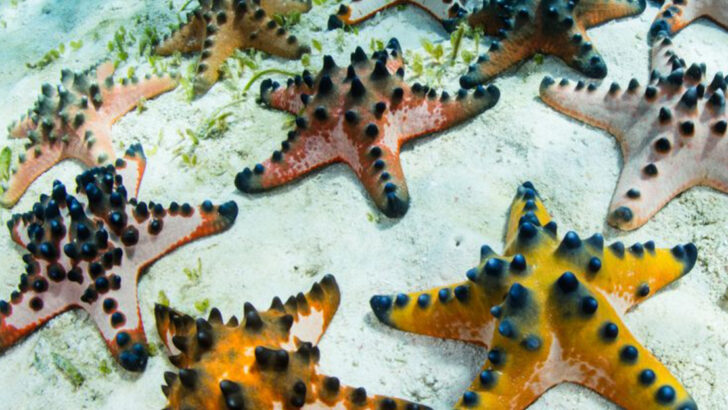Some fish are just too wild, weird, or wonderful for your average aquarium.
We’re talking creatures with glowing eyes, transparent heads, and jaws that unhinge like nightmare origami. These aren’t your basic goldfish or friendly guppies—they’re the rebels, the deep-sea divas, the underwater oddities that defy logic.
They haunt pitch-black depths. They flash colors the human eye barely understands. Some even walk.
These fish aren’t here to decorate your dentist’s office—they’re here to shock, stun, and leave you staring.
Ready to meet the rare and exotic swimmers you’ll almost never find in a tank?
Good. Let’s dive in.
Leafy Sea Dragon
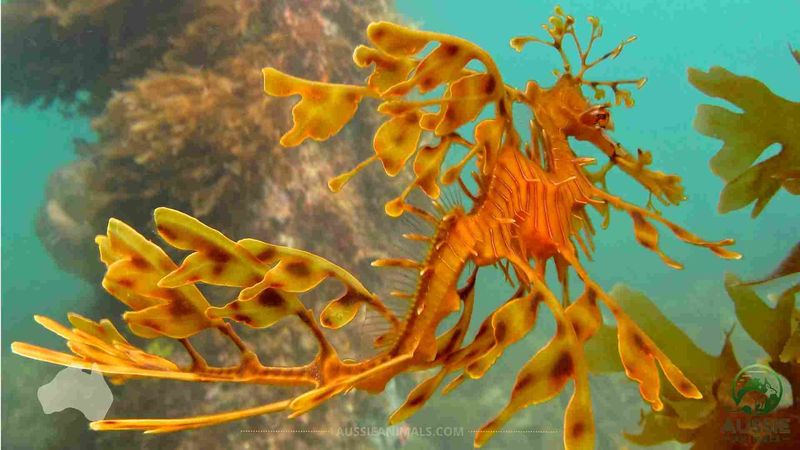
With an uncanny resemblance to floating seaweed, the Leafy Sea Dragon is a marine marvel. Its intricate leaf-like appendages offer perfect camouflage among the underwater foliage. Native to the southern and western coasts of Australia, these creatures glide through the water with an almost ethereal grace.
Unlike their seahorse relatives, they lack a prehensile tail, making them even more unique. These mesmerizing fish are a protected species, making encounters even rarer.
Their diet mainly consists of small crustaceans, which they inhale with a pipette-like mouth. Observing a Leafy Sea Dragon in its natural habitat is a true privilege.
Mandarinfish
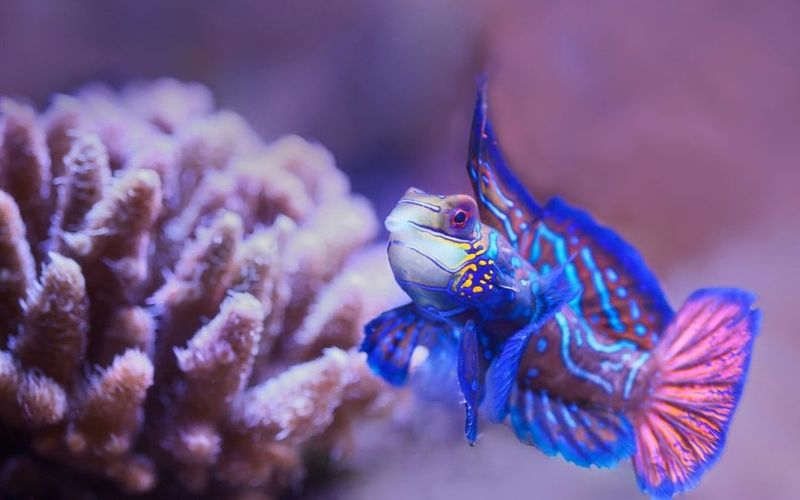
The Mandarinfish, with its psychedelic colors, is a sight to behold. Found in the Pacific’s warm waters, its vivid blues, oranges, and greens create an intricate tapestry of color.
These small, shy fish reside chiefly in coral reefs, where they hide among the crevices. Despite their beauty, Mandarinfish are toxic, secreting a foul-smelling mucus as a defense mechanism.
Their diet consists mainly of small crustaceans and they are often seen during their enchanting mating dance at dusk. Capturing the Mandarinfish’s beauty in words scarcely does it justice.
Dragon Goby
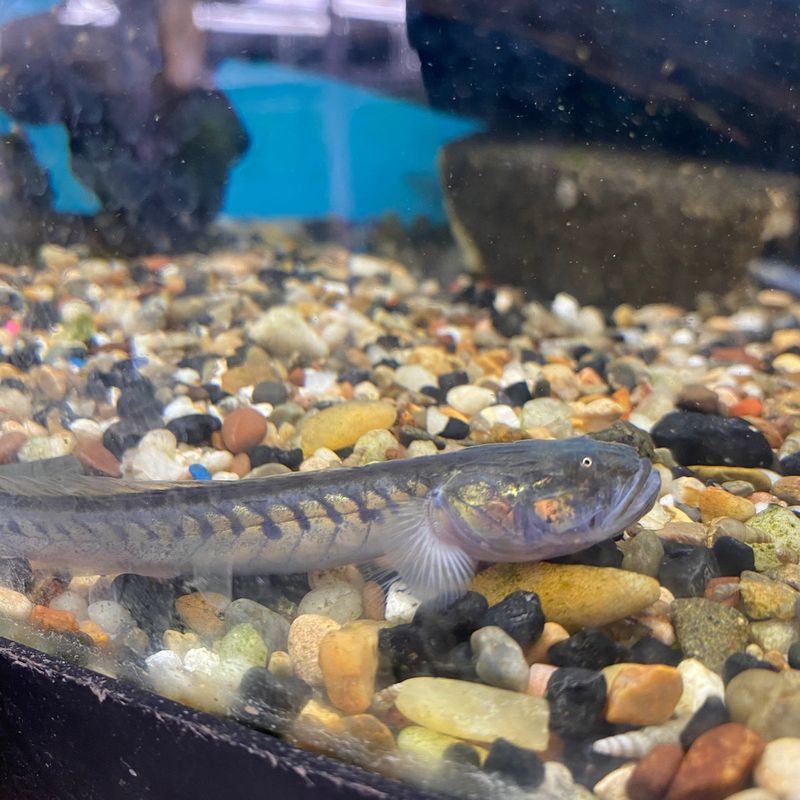
The Dragon Goby is a true enigma, known for its slender, eel-like body and translucent fins. Found in brackish waters of the Americas, it thrives where few other fish dare venture.
With poor eyesight, this bottom dweller relies on its keen sense of smell to forage for food. Its unique feeding habits involve sifting through the substrate for tiny edibles.
While not colorful, its muted tones allow it to blend seamlessly into its murky surroundings. The Dragon Goby is a testament to adaptability and survival in challenging environments.
Japanese Devil Stinger
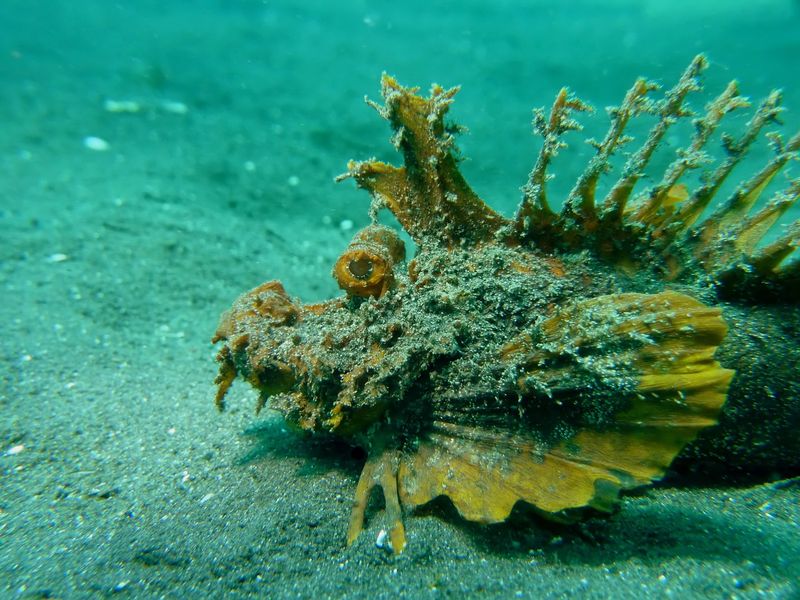
Lurking on the seabed, the Japanese Devil Stinger is a master of disguise. Its spiky, textured skin provides perfect camouflage against rocky substrates.
Native to the Indo-Pacific region, this ambush predator is known for its venomous spines. While it might appear menacing, its primary diet consists of small fish and invertebrates.
Handling this creature requires caution, yet its impressive adaptation to its environment makes it a favorite among marine biologists. The Japanese Devil Stinger is a reminder of the ocean’s mysterious and alluring depths.
Ornate Sleeper Ray
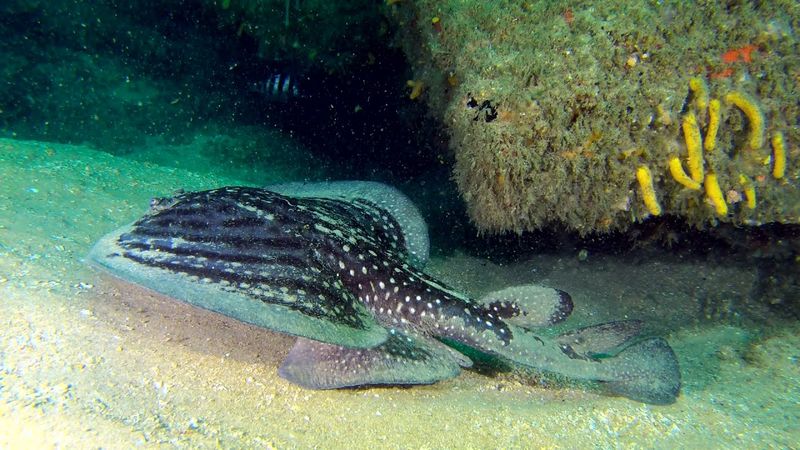
Graceful and enigmatic, the Ornate Sleeper Ray occupies the sandy floors of the ocean. With peculiar patterns adorning its disc-shaped body, it resembles a living masterpiece.
This ray’s subtle beauty is matched by its electric capabilities, able to deliver a mild shock if threatened. Typically inhabiting the waters off Southern Africa, it spends much of its time buried in sand.
While primarily nocturnal, its presence is often marked by the faint, undulating trails it leaves behind. The Ornate Sleeper Ray’s delicate elegance is truly captivating.
Chocolate Chip Sea Star
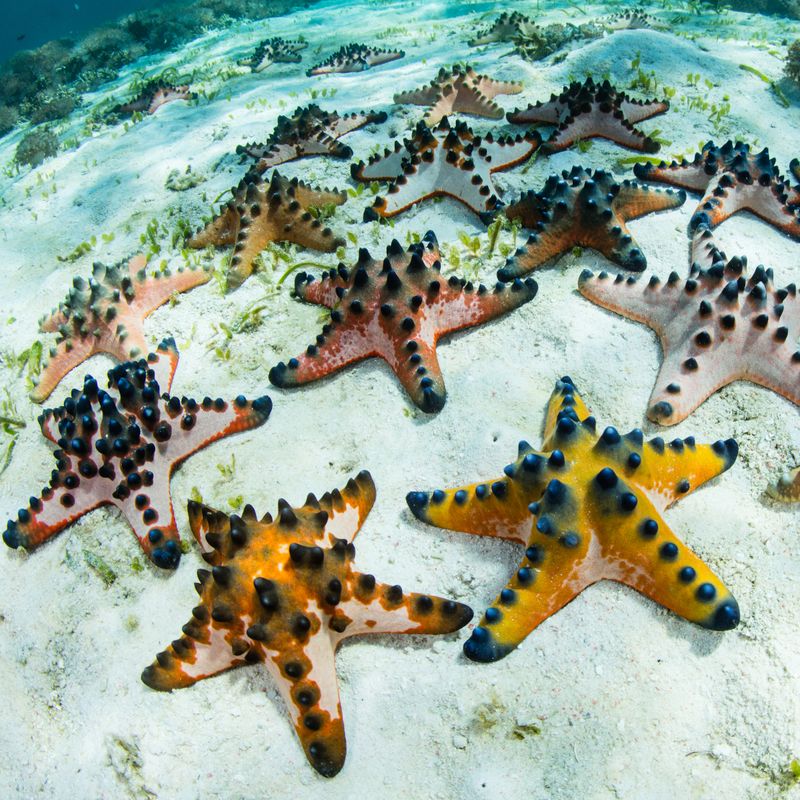
The Chocolate Chip Sea Star is both charming and peculiar. Named for its distinctive dark, raised knobs resembling chocolate chips, it is a favorite among divers.
Found in the Indo-Pacific region, this sea star prefers the vibrant coral reefs where it feeds on algae and small invertebrates. Despite its delectable name, it’s not to be tasted.
Its role in the marine ecosystem is vital, as it contributes to the balance of coral reef habitats. The Chocolate Chip Sea Star is a delightful addition to any underwater exploration.
Blue-Ringed Octopus
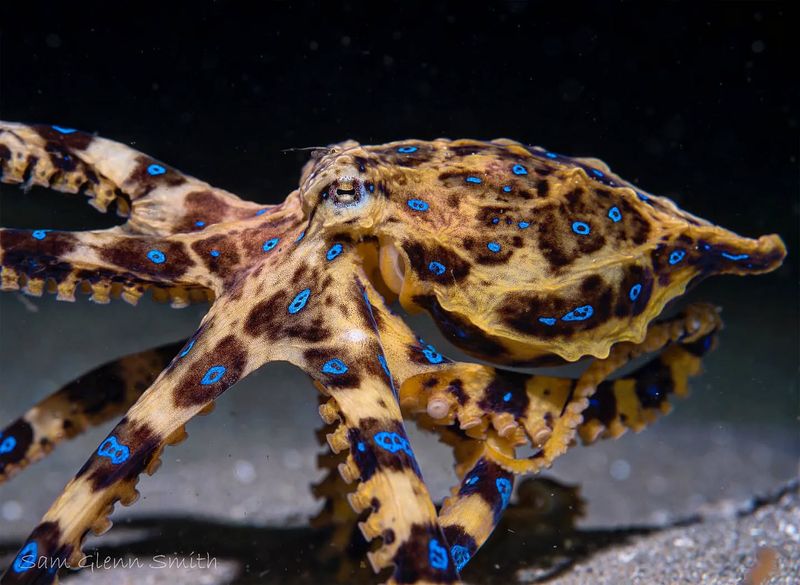
Small but mighty, the Blue-Ringed Octopus is renowned for its striking appearance and potent venom. Found in the Pacific and Indian Oceans, its vivid blue rings serve as a warning to potential predators.
Despite its diminutive size, it carries enough venom to incapacitate a human, making it one of the sea’s most formidable creatures. Its diet consists mainly of small crustaceans.
When unthreatened, the octopus remains well-camouflaged, but when provoked, its rings glow fiercely. The Blue-Ringed Octopus is a stunning, albeit dangerous, marine inhabitant.
Axolotl
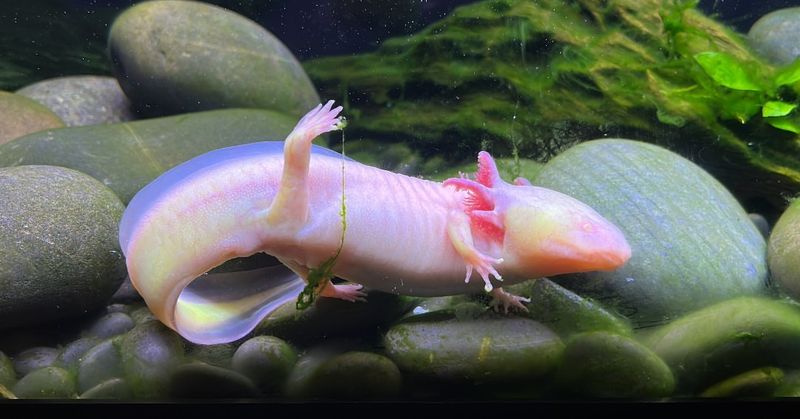
Known as the “walking fish,” the Axolotl is a curious amphibian that never fully transitions to land-dwelling adulthood. Originating from Mexico’s lake systems, it retains its larval features throughout life.
With feathery external gills and a perpetual smile, the Axolotl is nothing short of endearing. Its regenerative abilities are awe-inspiring, capable of regrowing limbs and even parts of its brain.
While their natural habitat is under threat, conservation efforts aim to secure their future. The Axolotl’s unique traits make it a symbol of resilience and wonder.
Wobbegong Shark
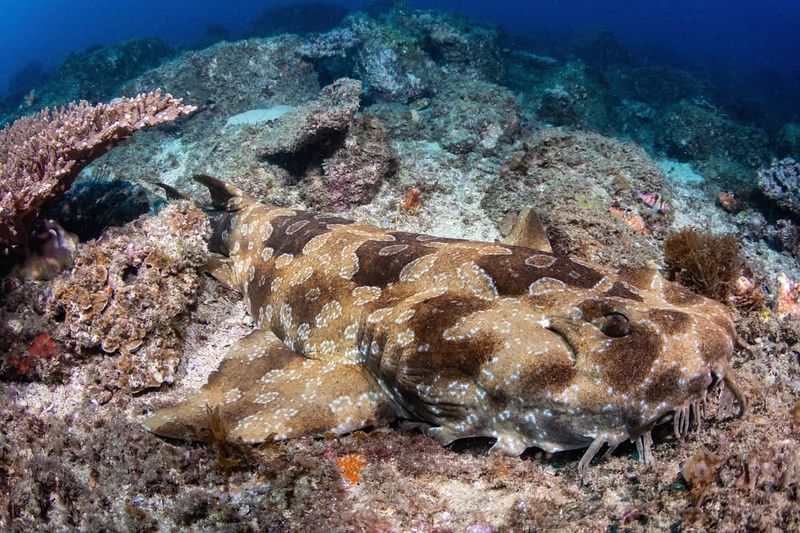
The Wobbegong Shark, with its ornate patterns and flat body, is a master of disguise. Found in the waters of Australia and Indonesia, it lies in wait on the ocean floor for prey to pass by.
Its name, derived from an Australian Aboriginal word, means “shaggy beard,” referring to the lobes around its mouth. These lobes aid in sensory perception and camouflage.
Despite its fearsome appearance, the Wobbegong is generally placid unless provoked. Its unique hunting style and appearance make it a fascinating subject of study.
Electric Eel
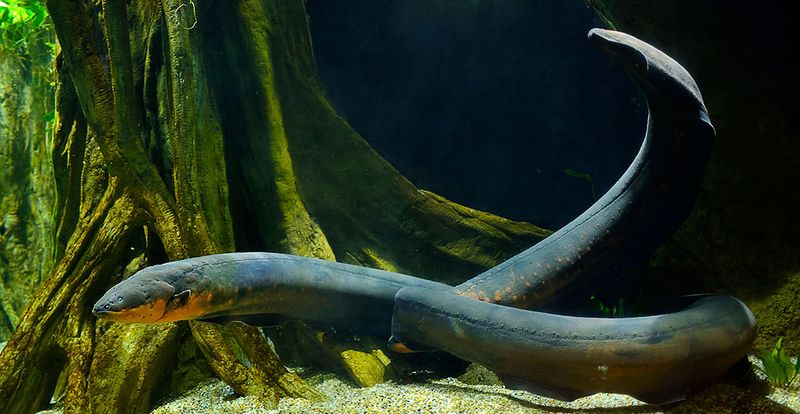
With the ability to generate electricity, the Electric Eel is one of nature’s most extraordinary creatures. Inhabiting the murky rivers of South America, it uses electrical pulses to navigate and hunt.
These powerful shocks, capable of stunning prey or deterring predators, have made it a subject of intrigue and study. Despite its name, the Electric Eel is more closely related to catfish.
Its elongated body and unique capabilities make it an icon of the aquatic world. The Electric Eel’s power is a vivid reminder of nature’s creativity and complexity.
Lumpfish
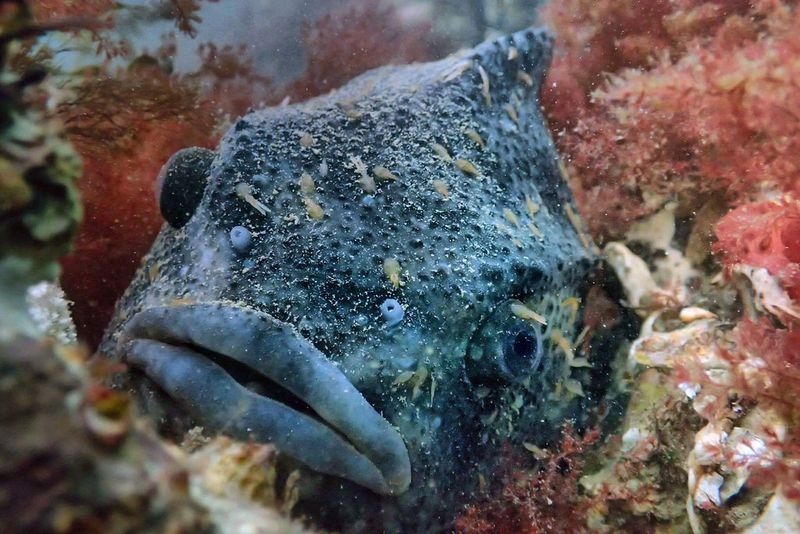
Charming in its way, the Lumpfish is known for its round, bumpy body and endearing awkwardness. Found in the cold waters of the North Atlantic, it adheres to rocks with specially adapted pelvic fins.
These unique suction-cup-like appendages allow it to withstand strong currents. Despite its ungainly appearance, the Lumpfish plays a crucial role in aquaculture, preying on lice that infest salmon.
Its playful demeanor and vital ecological role make it a beloved species among marine enthusiasts. The Lumpfish is a quirky testament to nature’s adaptability.
Psychedelic Frogfish
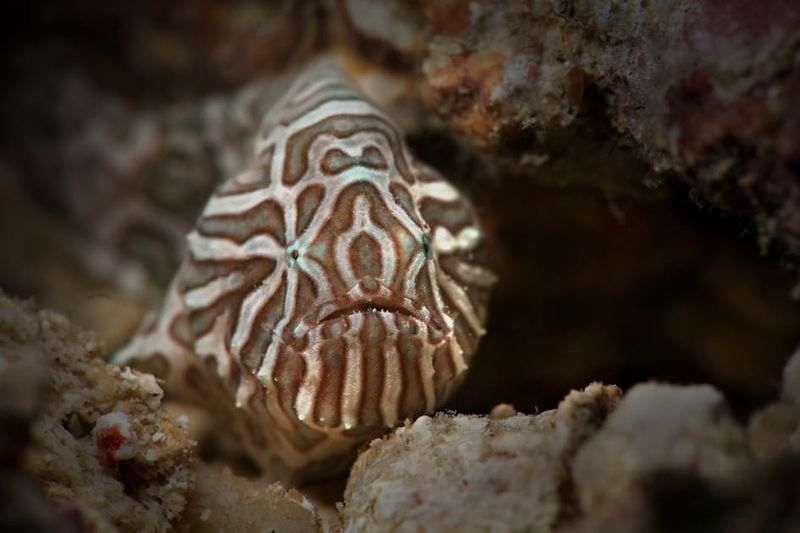
The Psychedelic Frogfish, with its swirling colors and unusual body shape, is a visual delight. Native to the waters around Indonesia, it uses its vibrant patterns to blend seamlessly with coral.
This master of camouflage lures unsuspecting prey with a worm-like appendage on its forehead. Its ability to “walk” on its pectoral fins adds to its allure.
Despite its bizarre appearance, it plays a vital role in the reef ecosystem by controlling small fish populations. The Psychedelic Frogfish is a vibrant piece of the ocean’s tapestry.
Starry Blenny
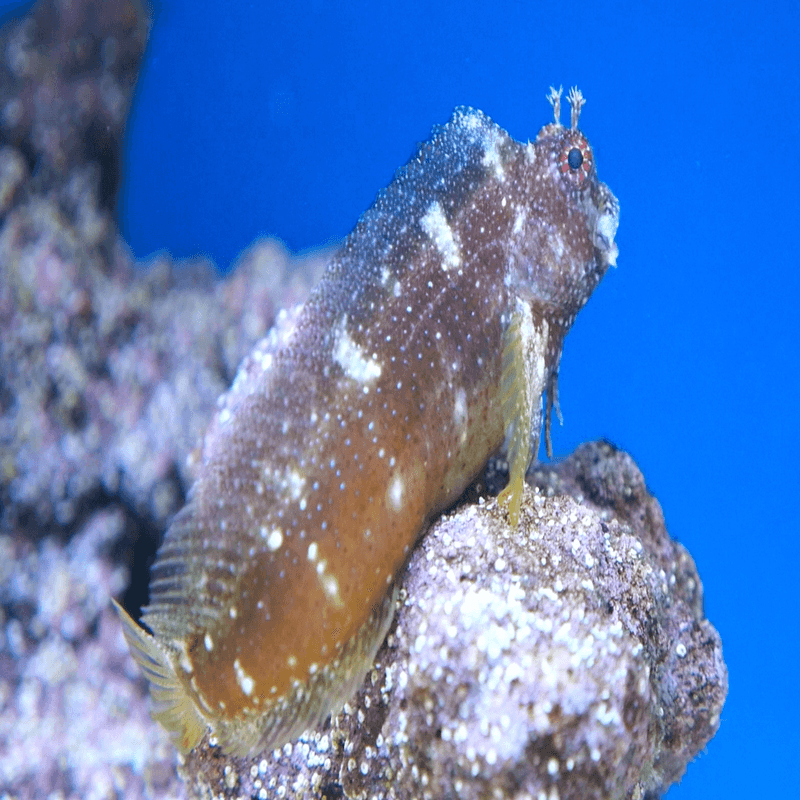
The Starry Blenny, with its constellation-like spots, is a small wonder of the sea. Found in the Red Sea’s vibrant reefs, it perches on rocks, surveying its colorful domain.
These spots serve as perfect camouflage, allowing it to blend with its surroundings. Its diet consists primarily of algae, contributing to the reef’s health.
Known for its curious nature, the Starry Blenny is often seen peering into the aquatic world. Its unique appearance and role in the ecosystem make it a treasured sight for divers.
Sailfin Tang
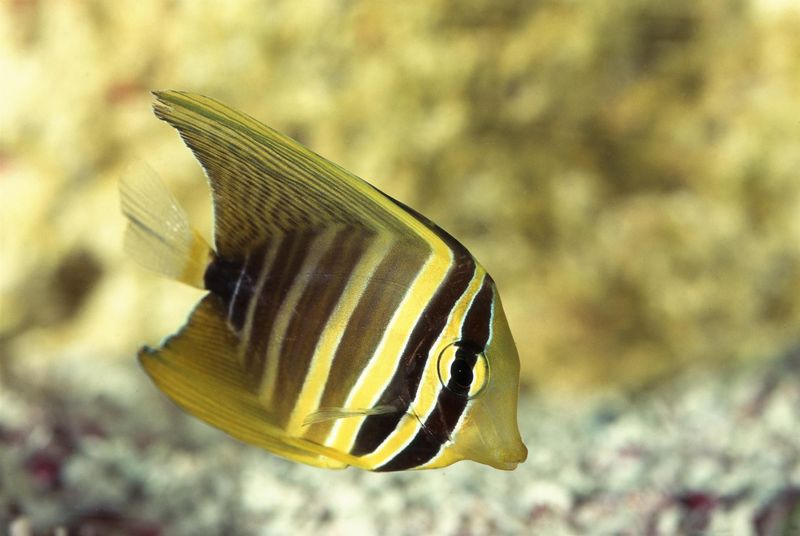
With its majestic sail-like dorsal fin, the Sailfin Tang is a spectacle of the ocean. Found in the Indo-Pacific, it graces coral reefs with its presence, showcasing striking patterns and colors.
Its elongated fins are not just for show; they aid in maneuverability and intimidation of rivals. These herbivorous fish play a key role in controlling algae growth on reefs.
Renowned for their beauty and ecological importance, Sailfin Tangs are a favorite among aquarists. Their elegance and grace make them a true jewel of the sea.
African Butterflyfish
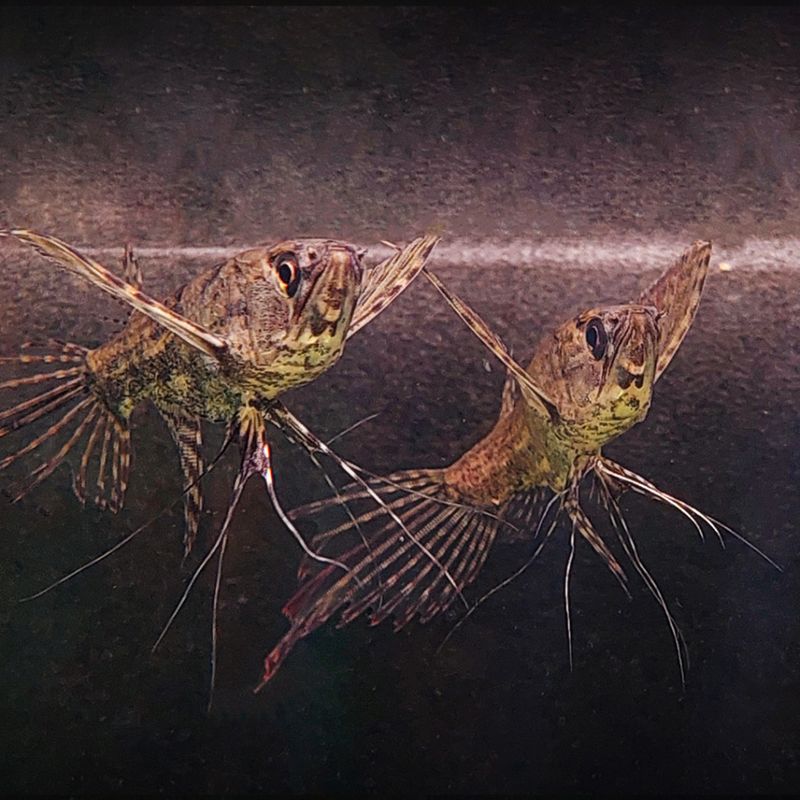
The African Butterflyfish, with its wing-like pectoral fins, appears to hover gracefully at the water’s surface. Native to African river systems, it feeds on insects and small fish.
Its unique ability to jump and glide makes it a remarkable predator. The broad fins resemble a butterfly’s wings, adding to its visual charm.
Despite its beauty, it is a voracious hunter, using surface tension to detect prey. The African Butterflyfish’s combination of elegance and predatory skills makes it a fascinating aquatic inhabitant.
Anglerfish
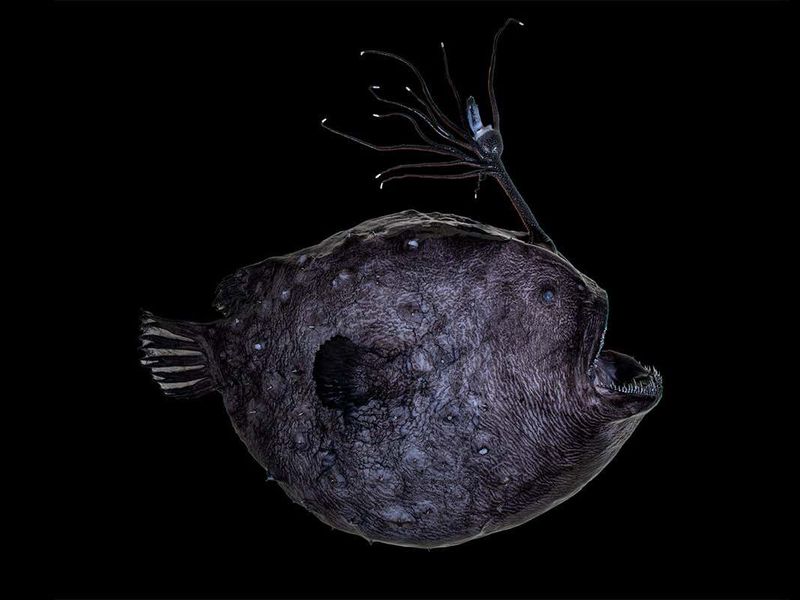
Lurking in the shadowy depths of the ocean, the anglerfish is a master of disguise and deception. With a bioluminescent lure dangling from its head like a fishing rod, it beckons unsuspecting prey into its gaping maw. This deep-sea predator is as elusive as it is fascinating.
Imagine exploring the ocean’s twilight zone and encountering this bizarre creature, its eerie glow cutting through the darkness. Anglerfish sport sharp, translucent teeth and a body designed to withstand immense pressure.
Their mysterious nature and haunting appearance make them a captivating subject for underwater exploration and study.

